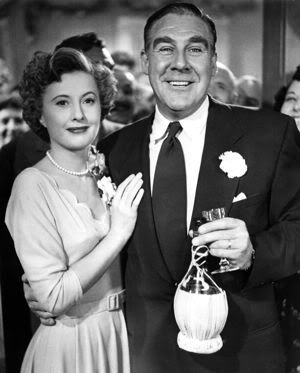
For the third time in her career, Marilyn Monroe would play a bit part in a movie from a major director. Clash By Night (1952), was less successful than The Asphalt Jungle (1950) and All About Eve (1950). It was not because it lacked star power though. The failings of this movie come in its story.
Clash By Night began as a Broadway play written by Clifford Odets and starring Tallulah Bankhead. The play was a flop on Broadway, but that didn’t stop
The movie and play both revolve around a love triangle. There is Mae Doyle, who has gone off to find her fortune and fame only to return back to her brother’s house with nothing. Her brother Joe works on a fishing boat owned by Jerry D’Amato. Jerry has the hots for Mae and because feels like she can’t do any better, she decides to marry Jerry. Things go alright for the married couple. Jerry feels like he has everything in the world. Mae is content with her life, but not happy.
Happiness comes into Mae’s life in the form of Jerry’s best friend Earl. The two begin sneaking behind Jerry’s back. In the play Earl was murdered when Jerry found out about the relationship. In the movie Mae is forgiven for her wrongdoing by Jerry and the two live reasonably happily ever after.
Marilyn Monroe appears briefly as Joe’s girlfriend, a cannery worker who contrasts the personality of Mae perfectly. Marilyn’s character has similar aspirations as the young Mae did, but instead of leaving town for the big city, she remains to marry Joe.
Of course when publicity cameras came around to take shots of the cast, there was a lot of attention paid to Marilyn. This did not sit well with Paul Douglas who plays Jerry. Not only is he getting screwed over in the movie, but in the publicity as well. He was not happy that some unknown bit player who appeared on screen for a few minutes was getting all the attention from the cameras.
Rounding out the love triangle is Robert Ryan who plays Earl. He became Marilyn’s only real ally on the set. Paul Douglas did not like her, even before the publicity incident. Barbara Stanwyck was basically indifferent to the young actress. And director Fritz Lang could not stand her.
Lang was a tremendously successful filmmaker in
Today Lang is not as well known as he probably should be. He was a pioneer in the silent cinema and his first sound picture dealt with the murder of children. But like Sergei Eisenstein something happened when he left his home country that prevented him from continuing to be a great filmmaker. That being said, he still deserves a place with the elite directors of cinema.

No comments:
Post a Comment